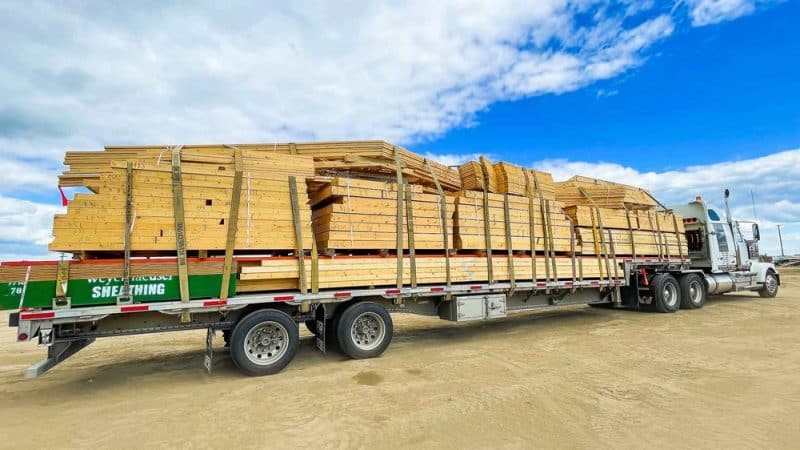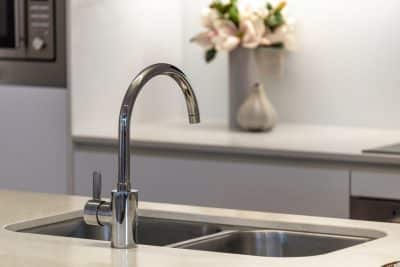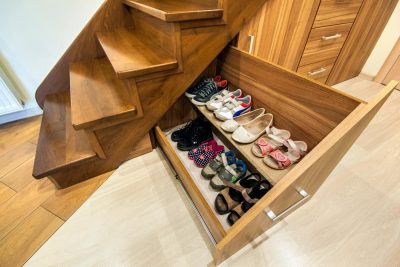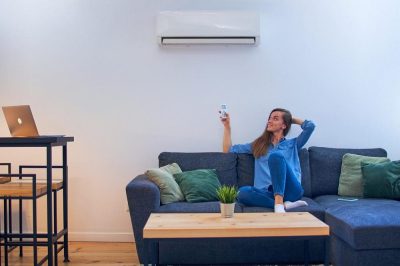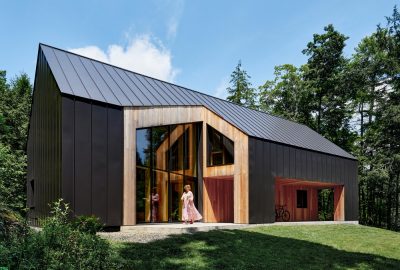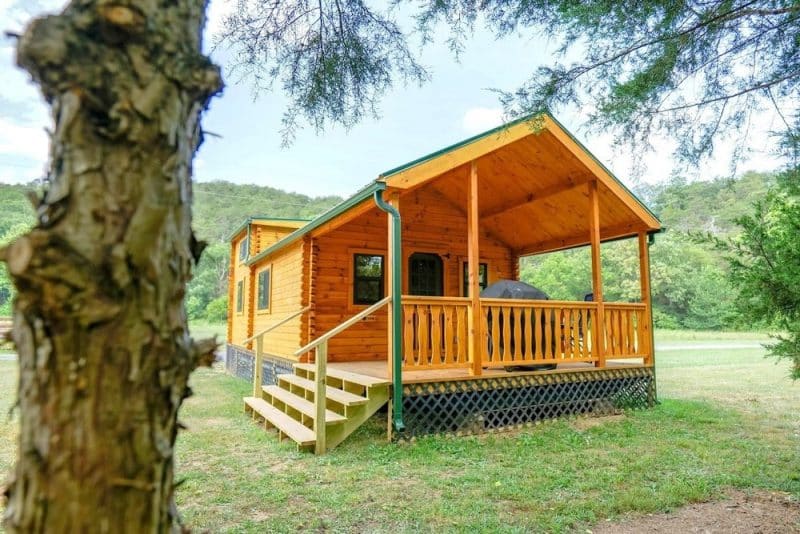
Log cabins have a rich history dating back to around 3,000 B.C. Before these cabins became popular in America, logs were used by many European countries to build homes and other outdoor structures. For many years, log cabins had simplistic designs and typically featured simple sloped roofs, a couple of windows, and dirt or wooden floors.
Today, log cabins have evolved to feature more complex and sophisticated designs. While you can still find simplistic, one-room cabins, you can also find elaborate wooden homes that have multiple rooms and state-of-the-art amenities. When it comes to log cabin architecture, the designs are only limited to the owner’s imagination.
From Large and Luxurious to Small and Portable, There is a Log Cabin For Everyone
The diversity in log cabin designs today ensures that whether you are looking for expansive luxury or compact efficiency, there is a log cabin suited to every lifestyle and need. The range of sizes and customizations available allows for a personalized approach to selecting a home, making the classic charm of log cabin living accessible to more people than ever before.
Large and Luxurious Cabins
For those seeking ample space and a touch of luxury, modern log cabins can be sprawling estates that span over 2,000 square feet. These larger cabins often feature multiple bedrooms and bathrooms, expansive living areas, and large kitchens equipped with the latest appliances. The size of these cabins allows for additional amenities that can greatly enhance lifestyle quality, such as dedicated home offices for remote work, game rooms for entertainment, home theaters, and even indoor pools. These cabins are ideal for families or those who entertain guests frequently, providing ample space for comfort and activities.
Mid-Sized Efficiency
Not every large cabin needs to be a palace. Many are designed with efficiency in mind, providing all necessary amenities in a more compact layout. These mid-sized cabins might range between 1,000 to 2,000 square feet and often feature clever design solutions to maximize space, such as open floor plans and multi-functional areas. They strike a balance between spaciousness and practicality, suitable for smaller families or couples who need extra room but want to keep maintenance manageable.
Small and Portable Cabins
On the other end of the spectrum, the rising popularity of tiny homes has influenced log cabin design significantly. Many modern log cabins now come in sizes less than 1,000 square feet but are designed to maximize every inch of space. Despite their small footprint, these cabins do not skimp on amenities; they often include full kitchens, spacious bathrooms, and cozy sleeping lofts. Their compact nature not only makes them more affordable but also more sustainable and easier to maintain, appealing to first-time homeowners, minimalists, or those looking for a vacation home.
Explore the Wide Range of Log Cabin Designs that Are Trending Today
Architectural Diversity
Modern log cabins are no longer bound by the traditional forms and functions of their predecessors. Architects and designers now leverage a blend of classic elements and contemporary design techniques to create structures that are both unique and functional. For example, the integration of mixed materials such as glass, steel, and traditional logs results in striking designs that push the boundaries of traditional log cabin aesthetics. Large glass facades help merge indoor and outdoor spaces, maximizing natural light and offering expansive views of the surrounding landscape.
Functional Aesthetics
Today’s log cabins can be tailored to meet specific lifestyles, ranging from minimalist and utilitarian to elaborate and luxurious. Eco-friendly designs featuring sustainable materials and energy-efficient technologies are particularly popular, appealing to environmentally conscious buyers. On the luxury end, cabins may include amenities like in-built saunas, designer kitchens, and custom millwork, combining rustic charm with modern luxury.
Customization at Your Fingertips
If you have ever thought to yourself, “I wish there were log cabins for sale near me,” you are in luck. Companies like Lancaster Log Cabins have responded to this demand by offering a wide range of customizable log cabin designs. While the headquarters are located in Pennsylvania, any home can be delivered throughout the country. These modern styles are designed to suit various preferences and needs, from compact and cozy to expansive and elaborate. With options to customize everything from layout to finishes, prospective homeowners can ensure their cabin reflects their personal style and functional needs.

Architectural Features in Modern Log Cabins
Vaulted Ceilings
Vaulted ceilings are a hallmark of many log cabins, dramatically enhancing the architectural appeal and spaciousness of these rustic dwellings. Beyond their aesthetic value, vaulted ceilings offer practical benefits that make them a preferred choice in cabin design. Their high, arching lines not only elevate the interior space visually but also physically, creating an airy and open environment that feels both luxurious and inviting.
The architectural impact of vaulted ceilings extends to how they influence the perception of the cabin’s interior. By drawing the eye upwards, they make rooms appear larger than their actual square footage, an essential feature in smaller cabins where maximizing the sense of space is crucial. This vertical expansion also allows for more significant natural light penetration, as higher walls typically accommodate larger windows or an increased number of windows. As a result, spaces with vaulted ceilings can enjoy an abundance of light during the day, reducing the need for artificial lighting and enhancing the natural rhythms of day and night within the home.
From a design perspective, the integration of wooden trusses and beams in vaulted ceilings is not only structurally necessary but also aesthetically pleasing. These elements add a touch of craftsmanship and rustic charm, reflecting the traditional log cabin ethos while providing modern structural integrity. The trusses and beams can be styled in various ways—whether left raw to showcase the beauty of natural wood or stained to complement the interior decor, adding a layer of visual interest and warmth that enhances the overall ambiance of the cabin.
Moreover, vaulted ceilings can significantly improve the acoustics within a cabin, making them particularly appealing for homeowners who value audio quality, whether for entertainment systems or personal enjoyment of music. The volume of space above can help to disperse sound more evenly and prevent the echo effects that often occur in flatter ceiling designs. This acoustic advantage makes vaulted ceilings ideal for social gatherings, enhancing spoken communication and providing a more pleasant auditory experience.
Maximizing Natural Light
Maximizing natural light with large windows and skylights is essential in modern log cabins, enhancing the connection to the natural surroundings and improving the interior ambiance and energy efficiency. Strategic placement of windows allows sunlight to deeply penetrate the cabin, highlighting the natural wood finishes and creating a warm, inviting atmosphere. This illumination changes throughout the day, aligning the indoor environment with the natural outdoor rhythms and adding visual interest.
Large windows also frame scenic landscapes, transforming views into dynamic artworks that evolve with the seasons, merging indoors with outdoors and enhancing the living experience with a sense of tranquility.
Skylights bring additional lighting, particularly effective in vaulted ceiling areas, illuminating central spots or darker corners and adding openness and height to the space. This top-down lighting improves visibility and enhances both aesthetics and functionality.
Furthermore, natural light reduces the need for artificial lighting, cutting down electricity use and supporting environmental sustainability. It also offers psychological and health benefits such as mood improvement, productivity boosts, and better regulation of circadian rhythms.
Using advanced, energy-efficient windows and adjustable window treatments can regulate indoor temperatures and light quality, enhancing comfort and privacy based on the time of day and season.
In summary, employing large windows and skylights in log cabins is a strategic design choice that boosts aesthetic appeal, functionality, and sustainability, integrating these homes more seamlessly with their natural settings.
Utilizing Natural Accessories
Incorporating natural elements like rocks, antlers, and indoor plants enhances the rustic charm of a log cabin, providing a cozy and inviting feel. These elements help establish a deeper connection between the indoor living spaces and the natural world outside.
A rock fireplace can serve as a robust, earthy centerpiece in a room, while a coffee table made from reclaimed wood adds character and history with its unique marks and grains. These features not only enrich the aesthetic but also support eco-friendly living by reusing materials and preserving natural resources.
Using antlers and branches in light fixtures or wall decor brings artistic expression into the cabin, merging natural forms with functional art. This approach not only decorates the space but also maintains a thematic continuity with the wilderness outside.
Indoor plants introduce vibrancy and life, improving air quality and bringing the outside in. They can be strategically placed to thrive in the cabin’s light conditions, whether in sunlit areas near large windows or in shadier corners, creating a dynamic interior landscape.
By integrating these natural accessories, the cabin’s interior mirrors the external environment, enhancing both the aesthetic and the functionality of the space, while promoting sustainable living practices.
Embracing the Outdoors
Embracing the outdoors is a central theme in the design of modern log cabins, where the architecture extends beyond the interior to include carefully crafted outdoor living spaces. These areas have become increasingly popular, reflecting a desire among cabin owners to seamlessly integrate indoor comfort with the natural environment. Outdoor living spaces in log cabins vary widely, from cozy, small porches adorned with soft, warm lighting and ceiling fans, to more substantial, screened-in porches or glass-enclosed sunrooms that offer expansive views of the surrounding landscape.
These outdoor areas are meticulously designed to cater to both relaxation and functional needs. For instance, intimate porches provide a serene spot for morning coffees or evening relaxation, while larger spaces are equipped with outdoor kitchens and fire pits, ideal for entertaining guests and hosting gatherings. The inclusion of such features enhances the cabin’s usability and enjoyment, extending the living space into the outdoors.
Additionally, these spaces often feature weather-resistant materials and design elements that protect against the elements while still allowing for an open, airy feel. This design strategy ensures that residents can enjoy the beauty of their natural surroundings in comfort, regardless of weather conditions. For example, retractable screens or glass panels can be used to adjust the exposure to the elements, providing flexibility and enhancing comfort.
Screened-in porches and sunrooms not only add to the aesthetic appeal of a cabin but also serve practical purposes by increasing the overall living space and adding to the property’s value. They create a transitional space that blurs the line between the indoors and outdoors, allowing residents to feel immersed in nature without leaving the comforts of home.
Conclusion
Log cabins stand as a quintessential choice for those seeking a new home that blends the allure of nature with the comforts of modern living. These iconic structures, with their rich historical roots and adaptable designs, cater to a diverse spectrum of preferences and lifestyles, making them particularly appealing to those drawn to a rustic yet refined aesthetic.
